#Muggleton
Explore tagged Tumblr posts
Text
SZUBKULTÚRA DEFINÍCIÓK & SZUBKULTÚRA KUTATÓK KORTÁRS MEGKÖZELÍTÉSEI
A szubkultúra kutatás régóta a szociológiai kutatások középpontjában álló témakör. A szubkultúrák ugyanis olyan különleges társadalmi csoportok, amelyek közös normákkal, értékekkel és szokásokkal rendelkeznek és közös média termék(ek) köré szerveződnek. Az elmúlt évtizedekben olyan tudósok, mint Sarah Thornton, Keith Muggleton, Andy Bennett és Paul Hodkinson a szubkultúrákkal kapcsolatosan fontos fogalmakat, értelmezéseket vezettek be. A következő blogbejegyzésben ezekről a megközelítésekről lesz szó.
Sarah Thornton "Club Cultures: Music, Media, and Subcultural Capital" című művében az elektronikus tánczene (EDM) klubokat körülvevő szubkultúrákat vizsgálja. Thornton kihangsúlyozza a média és a kulturális tőke szerepét a szubkultúrák kialakulásában és fenntartásában. Arra az álláspontra helyezi a hangsúlyt, hogy a szubkultúrák nem csupán a mainstream kultúrával szembeni lázadásról szólnak, hanem pont hogy aktívan foglalkoznak azzal, hogy hol a helyük ezen belül. Thornton etnográfiai megközelítése gazdag betekintést nyújt a klubba járók és DJ-k életébe, kiemelve a szubkulturális gyakorlatok nehézségeit.
Keith Muggleton "Inside Subculture: The Postmodern Meaning of Style" című művében a szubkultúrákat posztmodern nézőpontból vizsgálja meg („poszt-szubkultúra” fogalmának bevezetése). Muggleton azt állítja, hogy a szubkultúrák alapjaiban véve nem egységesek (mint ahogy azt korábban gondolták a szubkultúra kutatók), hanem igenis töredezettek és változékonyak. A posztmodernizmus és a kulturális fogyasztás elméleteire támaszkodva azt állítja, hogy a szubkulturális stílus szimbolikus tőke formájában működik, állandó újraértelmezés és árucikké alakítás jellemzi. Muggleton elemzéséből kiderül, hogy a szubkultúrák és annak résztvevői hogyan navigálnak a késő kapitalizmus és a kulturális globalizáció rendszerében.
Andy Bennett "Subcultures or Neo-Tribes? Rethinking the Relationship between Youth, Style, and Musical Taste" című művében a fiatalok kultúrájának változó természetét vizsgálja a digitális korban. Bennett bevezeti a neo-törzs fogalmát, amely szerinte jobban leírja a kortárs szubkultúrák változékony és átmeneti természetét. Hangsúlyozza a digitális technológia és a közösségi média szerepét a közösségek kialakulásában, amelyeket közös érdekek és ízlések kötnek össze. Bennett kutatása megkérdőjelezi a hagyományos szubkultúra fogalmát, ugyanis a közösségeket formáló határok már nem olyan egyértelműek. Szerinte az identitásformálás egyre inkább decentralizált és hálózat jellegű.
Paul Hodkinson „Goth: Identity, Style and Subculture” című munkájában megfogalmaz négy, a szubkultúrák felismeréséhez szükséges mutatót, amelyek megléte szükséges szerinte ahhoz, hogy egy adott közösséget szubkultúrának lehessen tekinteni. Ezek a következők:
1. Változékonyság és sokszínűség (fluidity and diversity): Hodkinson azt mondja, hogy a szubkultúrák nem statikus entitások, hanem dinamikusak és állandó fejlődésben vannak.
2. Tényezők kölcsönhatása (interplay of factors): Hodkinson azt állítja, hogy a szubkultúrák kialakulását és fejlődését különböző tényezők határozzák meg, hatással vannak rá a társadalmi, kulturális és egyéni attitűdök.
3. Több jelző (multiple indicators): Hodkinson azonosítja a szubkultúrák jellemzőit. Ide tartoznak a jellegzetes stílusok, értékek, normák és egyedi rituálék, amelyet a szubkultúrák résztvevői képviselnek, gyakorolnak. Hangsúlyozza, hogy ezek a jelzők eltérő jelentőségűek lehetnek a különböző szubkultúrákban, és hogy nem minden szubkultúra mutatja ugyanazokat a jelzőket ugyanolyan mértékben.
4. Határok bonyolultsága (complexity of boundaries): Hodkinson elismeri, hogy a szubkultúrák határait definiálni, meghatározni bonyolult. Bár néhány szubkultúrának világos és merev határai vannak, másoknak áteresztőbb határaik lehetnek, vagy akár átfedésben lehetnek más szubkultúrákkal is.
Habár Thornton, Muggleton, Bennett és Hodkinson különféle nézőpontokat kínálnak a szubkultúrák definiálására, jelentős konvergencia figyelhető meg az elemzéseikben. Mindhárom tudós elismeri a szubkulturális azonosságok meglétének szükségességét és a szcénákon belüli navigálás bonyolultságának tényét. Elismerik a média, a fogyasztói kultúra és a digitális technológia szerepét a kortárs szubkultúrák formálásában. Azonban különböznek az ellenállás, az autenticitás és a kulturális tőke jelentőségének kérdésében.
B.
1 note
·
View note
Text
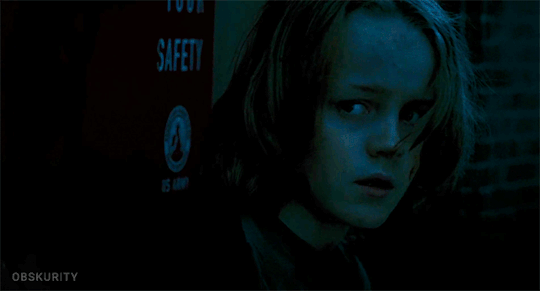

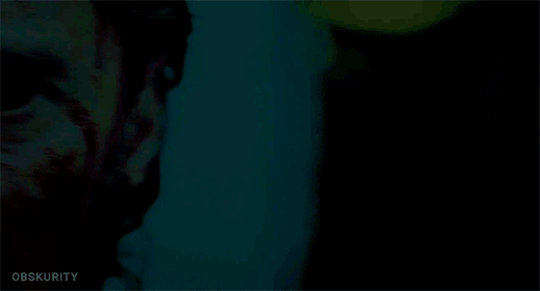
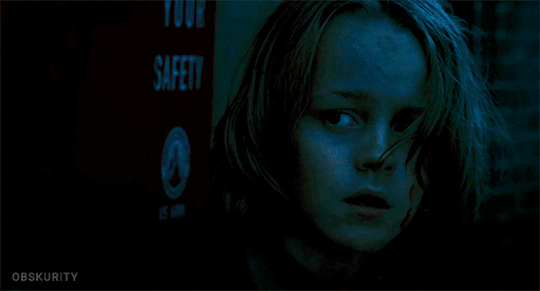
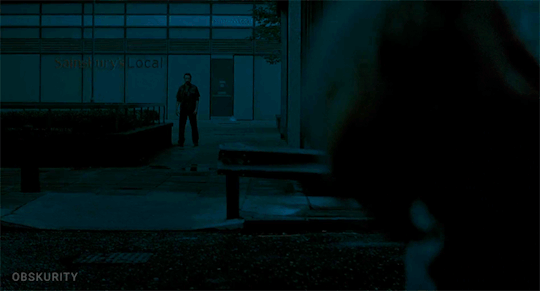
#28 weeks later#jeremy renner#robert carlyle#Mackintosh Muggleton#donald harris#don harris#doyle#andy#gif#movies#2007#Juan Carlos Fresnadillo#horror#zombies#rage virus
18 notes
·
View notes
Text

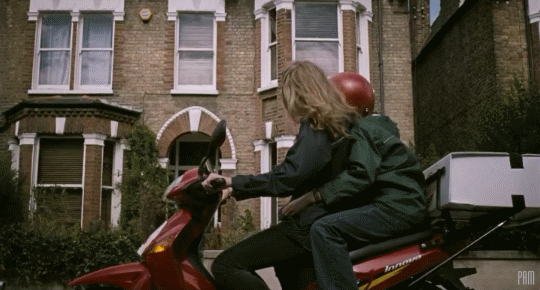

28 Weeks Later (2007)
#2007#gif#film#movie#post-apocalyptic#moto#bike#28 Weeks Later#Imogen Poots#Tammy#Mackintosh Muggleton#Andy#Catherine McCormack#Alice#Robert Carlyle#Don#Rose Byrne#Scarlet#Jeremy Renner#Doyle#Idris Elba#Stone#London#United Kingdom#Honda#ANF 125#Innova#zombies
30 notes
·
View notes
Text
Who remembers this sequel?

#28 weeks later#robert carlyle#rose byrne#jeremy renner#harold perrineau#imogen poots#mackintosh muggleton#catherine mccormack#idris elba
2 notes
·
View notes
Text

#jonathan bailey#Zak Muggleton#alec muggleton#five children and it#five children & it#5 children & it#5 children and it
7 notes
·
View notes
Text

Day 10 🎃:
28 Weeks Later (2007)
#horror#horror movies#spooky season#halloween#now watching#31 days of halloween#zombie#zombies#stay spooky#Robert Carlyle#Jeremy Renner#Rose Byrne#Imogen Poots#Mackintosh Muggleton#Idris Elba#Catherine McCormack#Harold Perrineau#Juan Carlos Fresnadillo
3 notes
·
View notes
Text
28 Weeks Later (2007) Review
Six months after the rage virus was inflicted on the United Kingdom, the US army attempts to help secure a small area of London for the survivors to start again and rebuild. But it was not going to be as simple as that . . . ⭐️⭐️⭐️⭐️ Continue reading 28 Weeks Later (2007) Review

View On WordPress
#2007#28 Weeks Later#Amanda Walker#Catherine McCormack#Chris Ryman#Disney+#Emilt Beecham#Enrique Lopez Lavigne#Garfield Morgan#Harold Perrineau#Horror#Idris Elba#Imogen Poots#Jeremy Renner#Juan Carlos Fresnadillo#Mackintosh Muggleton#Philip Bulock#Review#Robert Carlyle#Rose Byrne#Rowan Joffe#Sci-Fi#Stewart Alexander#Tristan Tait
0 notes
Text
One Mann's Movies Film Review of "28 Weeks Later" (2007). A recap for me on the zombie classic before the brainless return this week. 4/5.
#Alex Garland#bob-the-movie-man#bobthemovieman#Cinema#Danny Boyle#Emily Beecham#Enrique Chediak#Enrique López Lavigne#Film#film review#Harold Perrineau#Idris Elba#Imogen Poots#Jeremy Renner#Jesús Olmo#Juan Carlos Fresnadillo#Mackintosh Muggleton#Millie Bobby Brown#Movie#Movie Review#One Mann&039;s Movies#onemannsmovies#onemansmovies#Raymond Waring#Review#Robert Carlyle#Rose Byrne#Rowan Joffe
1 note
·
View note
Text

28 Weeks Later
#library#dvds#movies#28 weeks later#juan carlos fresnadillo#robert carlyle#rose byrne#jeremy renner#harold perrineau#catherine mccormack#mackintosh muggleton#imogen poots#idris elba
1 note
·
View note
Text
SALEM WITCH DOLL Supernatural rural horror - first images and trailer
Salem Witch Doll is a 2024 horror film about Sarah, a depressed college dropout, who must uncover her family’s twisted history, and her own greater purpose if she is to defeat the Salem Doll, a monstrous wooden creature that terrorises her and her loved ones. The movie was written and directed by Daniel Yates (Mother Mafia; The Madness of Humpty Dumpty aka Curse of Humpty Dumpty 3). Produced by…

View On WordPress
#2024#Amanda Jane York#Bárbara Brito#British#Mackintosh Muggleton#Mark Collier#movie film#Robin Kirwan#Salem Witch Doll#supernatural horror#Tash Chant#trailer
0 notes
Text
THE HOLMWOOD FOUNDATION -EPISODE TWO
It's finally here! Episode two of The Holmwood Foundation, in which we continue Jeremy and Maddie's Hike from Hell.
Catch it at the link below, or wherever you get your podcasts.
Content Warning: swearing, themes of possession/removal of bodily autonomy, depictions of violence, including implied violence to animals, and brief sounds of vomiting. Listener discretion is advised.
The Holmwood Foundation is a Found Footage Horror-Fiction Podcast, a modern-day sequel to the gothic novel Dracula.
We follow Maddie Townsend (Rebecca Root) and Jeremy Larkin (Seán Carlsen), two co-workers at the Holmwood Foundation: a secret organisation that has been maintaining and studying the remains of Count Dracula for the last 130 years, as they are possessed by the ghosts of Jonathan and Mina Harker, and embark on a nightmare road trip, carrying Dracula's severed head across the UK, in an effort to stop him once and for all.
EPISODE CAST AND CREW:
Madeline Townsend/Mina Harker: Rebecca Root Jeremy Larkin/Jonathan Harker: Seán Carlsen Arthur Jones: Samuel Clemens Dr Lake: David Ault Pub Landlord: Karim Kronfli Train Conductor: Jonathon Carley The Sister: Jackie Calistahhh Reporter #1/Fay Townsend: Flloyd Kennedy Reporter #2: Anusia Battersby Collins: Lou Sutcliffe Train Tannoy: Georgia Cook Phone voice: Becky Wright The episode was produced and written by Fio Trethewey and Georgia Cook. Directing by Samuel Clemens. Script Editing by Katharine Armitage. Sound Design and Engineering by Benji Clifford The Theme music was composed and produced by Duncan Muggleton, and the episode art was produced by Georgia Cook
For more information, as well as transcripts and further Cast and Crew details, please visit our official website: www.theholmwoodfoundation.com
New episodes bi-weekly from now until August. Episode three will be dropping on June 23rd, and join us this time next week for a special listen-along/interview live stream! (More details to come)
#the holmwood foundation#the holmwood foundation podcast#Train Fiend#Dracula#Podcast#horror podcast#horror fiction podcast#vampires#possession#Jonathan Harker#Mina Harker#Jeremy Larkin#Maddie Townsend#audio drama#found footage#creepy#horror#voice acting#Rebecca Root#sean carlsen
138 notes
·
View notes
Text
The Muggletonians, founded by John Reeve and Lodowick Muggleton in mid-17th century London, believed that if a person were exposed to the full tenets of their faith and rejected it they would be irretrievably damned. This risk tempered proselytization: they hesitated to expose people to loss of salvation which may explain their low numbers.
effective altruist christians??
55 notes
·
View notes
Text

Are you ready for your stay at Fellmoor Hotel this Halloween?
While filming the latest episode of ghost hunting TV show ‘Phantom Finds’, a team of paranormal investigators step into the notorious Fellmoor Hotel, only to discover that the stories surrounding the hotel might hold more truth than first thought.
Produced for Hawk and Cleaver, for The Other Stories podcast.
Written by @Georgiacooked, produced by Duncan Muggleton, with artwork from Heather Vaughan.
Check in at The Other Stories when the 6 episode Halloween special premieres on 26th October!
#writing#my writing#audio fiction#I wrote an entire Halloween Special!#Thank you so much to the team at TOS for handing me the pen this year#The Other Stories#Horror#Halloween#horror writing#horror anthology#haunted#haunted house
18 notes
·
View notes
Video
youtube
28 Weeks Later (5/5) Movie CLIP - Burning For You (2007) HD
#youtube#28 weeks later#scarlet#rose byrne#sergeant doyle#jeremy renner#tammy#imogen poots#andy#mackintosh muggleton
0 notes
Text
Speaking of subculture and style, I was reading this and I was like "yeah this is exactly TikTok micro trends and fast fashion styles." That's the THING. ...this is a bit uh... academic-ese and dense, but:
David Muggleton (1997) has extended many of the premises of those earlier, and decidedly modernist, studies of subcultural practice, recalibrating them to suit a postmodern milieu.[ 23 ] Writing on the post-subculturalist, he places particular emphasis on style and the encroachment of the visual into the everyday.
In the aestheticized hyperreal setting of everyday life there are no commodities left for subcultures to appropriate, just signs, the logical conclusion of a move away from use-value (authentic-modern) to exchange-value (manufactured-modern) and finally to the apotheosis of sign value (postmodern). Subcultural styles become simulacra, copies with no originals.[ 24 ] Accordingly, there is no longer space for originality, as referents have been displaced or disappeared and the "real" has been reduced to the play of surfaces, an infinite series of signifiers signifying more signifiers. Creative practices such as fashion, art and music become depthless manifestations of postmodern pastiche, where any potentially radical politics (identity, resistance or otherwise) is eviscerated.[ 25 ] If there is no originality there is no authenticity:
"Post-subculturalists no longer have any sense of subcultural authenticity where inception is rooted in particular sociotemporal contexts and tied to underlying structural relations. Indeed post-subculturalists will experience all the signs of the subculture of their choosing time and time again. Choosing is the operative word here, for post-subculturalists revel in the availability of subcultural choice...This is something that all post-subculturalists are aware of, that there are no rules, that there is no authenticity, no reason for ideological commitment, merely a stylistic game to be played."
Post-Subculturists are no longer rooted at inception in a very particular time, and among particular people, no longer tied to the structure of society where there's "popular culture" and "subculture" (and also "counterculture," because the structural relations no longer any grounding in specificity or authenticity. There is no ideological commitment (or engagement, really) in the post-subculture, no rules.
It's just: mob wife, clean girl, cottage core, dark academia, eclectic grandpa, quiet luxury, tenniscore, office siren, twee, coquette, goblin core....
That linked essay does discuss like...further nuances or criticisms of the above, and alternative arguments but I do think that this can at least describe "micro-trends" fairly well, because they're not really full subcultures.
6 notes
·
View notes